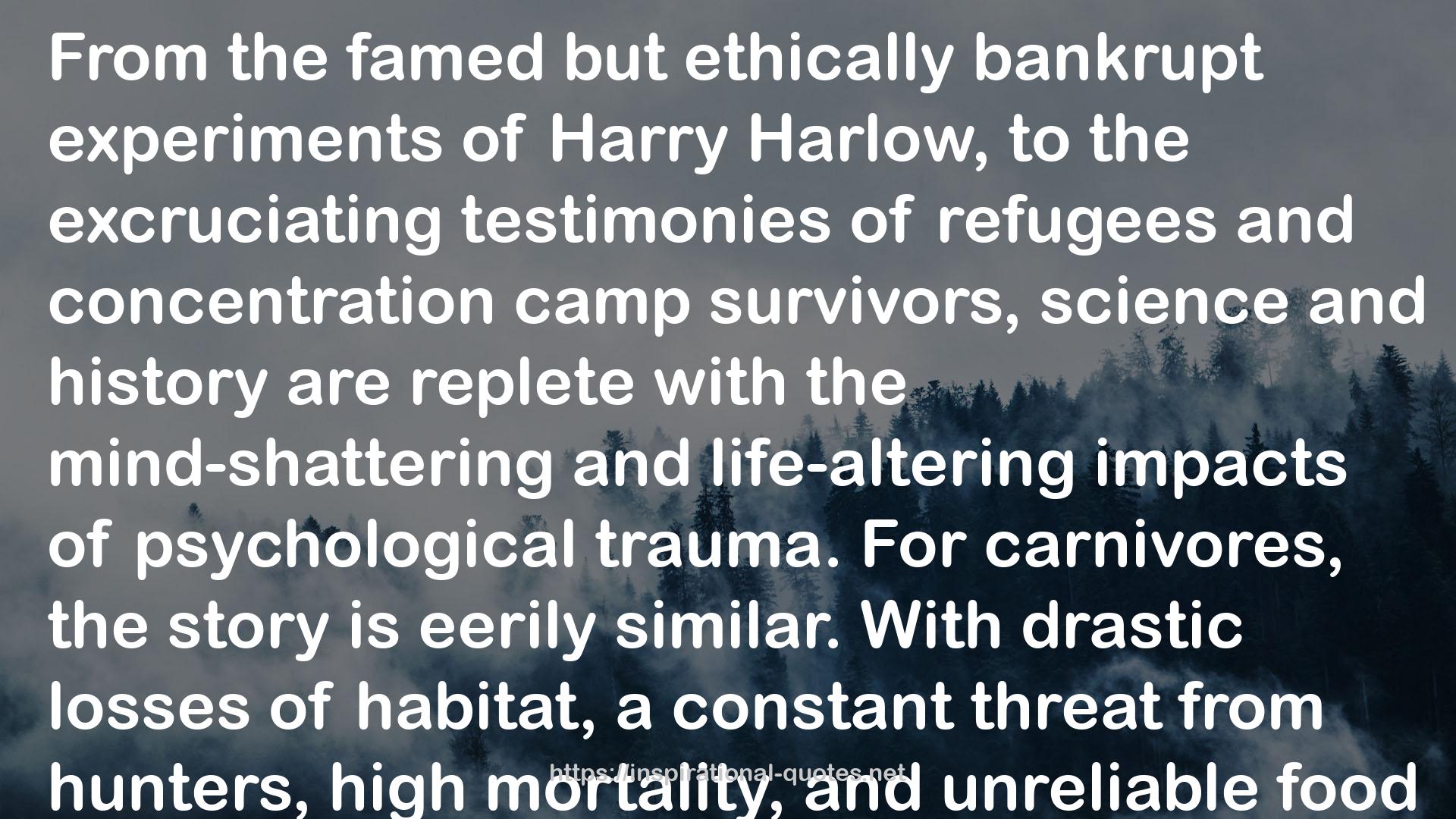" From the famed but ethically bankrupt experiments of Harry Harlow, to the excruciating testimonies of refugees and concentration camp survivors, science and history are replete with the mind-shattering and life-altering impacts of psychological trauma. For carnivores, the story is eerily similar. With drastic losses of habitat, a constant threat from hunters, high mortality, and unreliable food sources, life for the average carnivore has changed dramatically and rapidly from historic norms. Under highly stressful physical or emotional conditions (food deprivation, decreased habitat, loss of one's mother, social disruption), species-normative brain processes are compromised. What goes around on the outside, comes around on the inside. Each unusual change in the environment telegraphs directly into the brain and body, altering the organism's inner blueprint. These neuroepigenetic changes then are expressed as variations in personality, stress regulation, and immunological resilience. The result is a puma who is not quite a puma. "
― , Carnivore Minds: Who These Fearsome Animals Really Are
